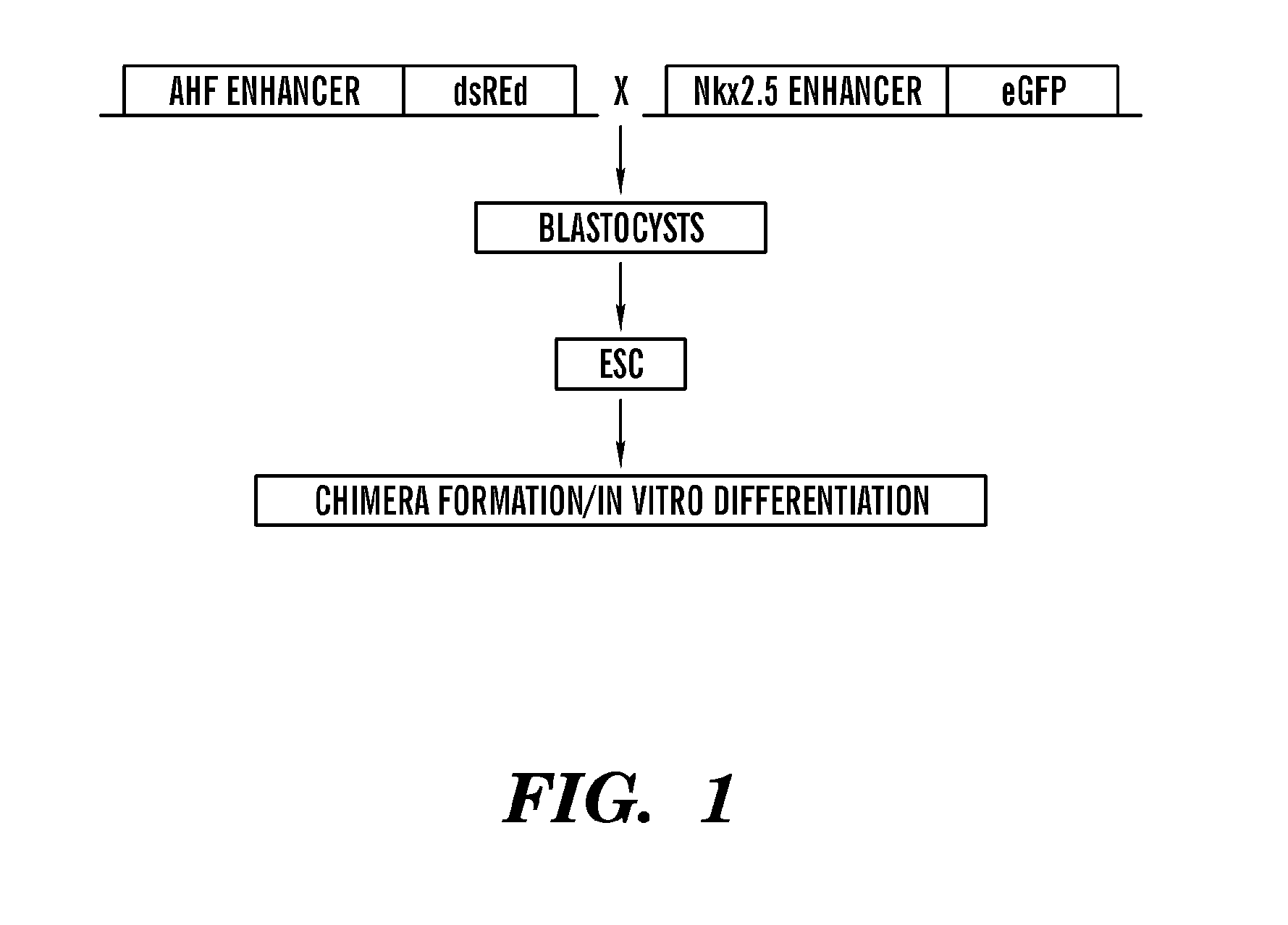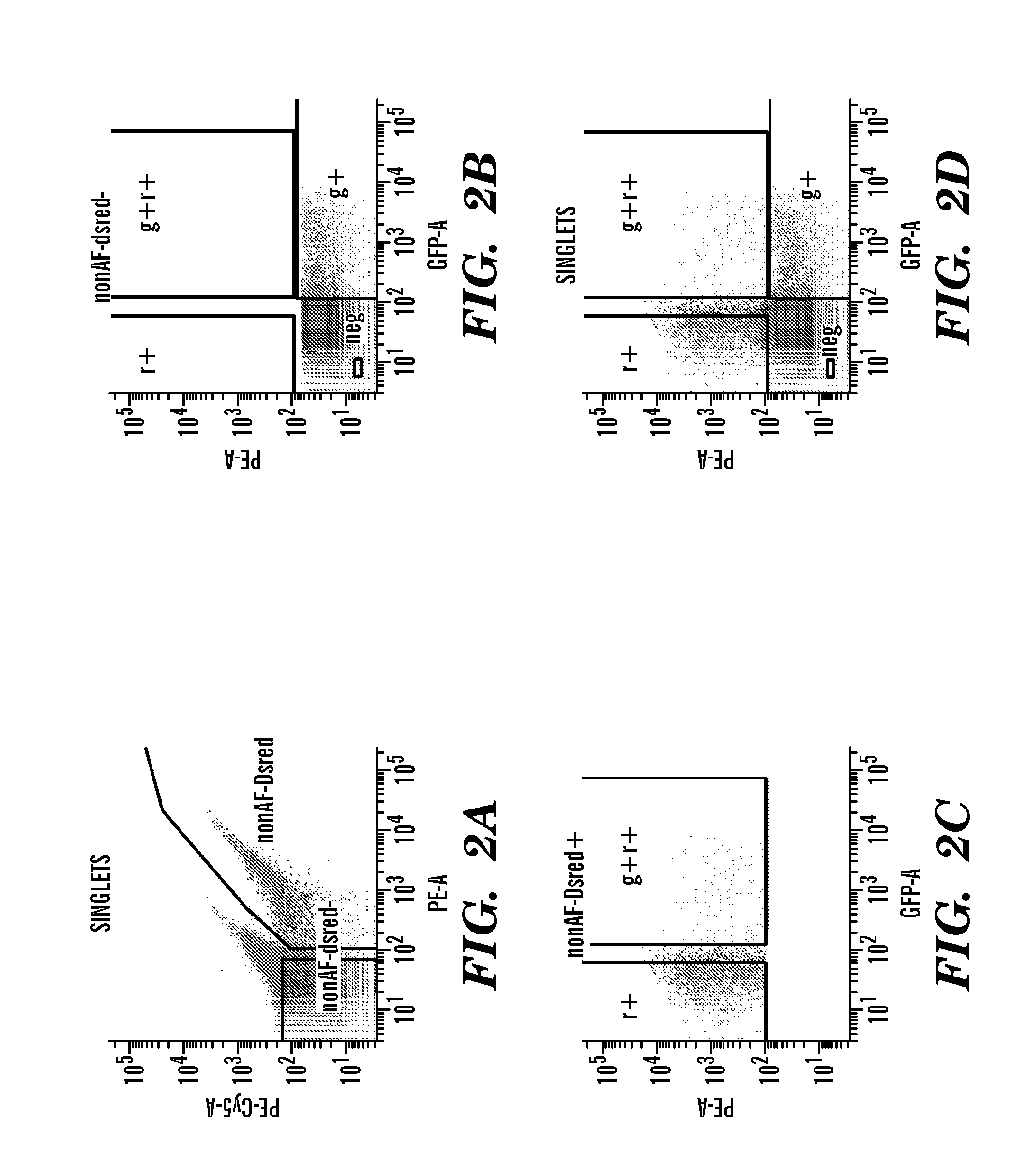Tissue engineered myocardium and methods of production and uses thereof
a technology of tissue engineering and myocardium, applied in the field of tissue engineering, can solve the problems of hampered drug screening and regeneration, lack of new approaches, and clear limitations in reproducibility and genetic abnormalities
- Summary
- Abstract
- Description
- Claims
- Application Information
AI Technical Summary
Problems solved by technology
Method used
Image
Examples
example 1
[0510]Mammalian cardiogenesis requires the generation of a highly diversified set of both muscle and non-muscle heart cell lineages, including atrial and ventricular cardiomyocytes, conduction system and pacemaker cells, smooth muscle, endothelial, valvular, and endocardial cell types (For review, see (1-5). The formation of these various cardiovascular cell lineages in distinct heart and vascular compartments is based on the existence of a closely related set of multipotent progenitors in the early embryonic heart field (6-10) which can be divided into first (FHF) and secondary heart field (SHF) lineages (2, 11, 12). The secondary heart field lineages are marked by the expression of Islet-1, which give rise to most of the muscle and vascular cells in the heart itself, with the exception of the left ventricular chamber (6-8, 13), as well as contributing to epicardial lineages that play a critical role in coronary arteriogenesis (14, 15). In vivo lineage tracing and clonal cell assay...
example 2
[0525]Generation of Nkx2.5-eGFP and SHF-dsRed Transgenic Mouse Embryonic Stem Cell Lines:
[0526]Although clonal studies have suggested the possibility of a common upstream precursor for the left and right ventricular precursors, the inability to isolate large amounts of purified, committed primary and secondary heart field progenitors has precluded their direct comparison.
[0527]Embryonic stem cell lines (ESC) can differentiate into many different cell lineages in vitro and utilize many of the in vivo developmental programs, providing an attractive model system for studying lineage commitment. For example, in vivo ESCs can contribute to all cell types of chimera mice; in vitro ESCs can differentiate through the formation of embryoid bodies (EBs) into a diverse set of cell populations with cell types from all three germ layers. Significantly, ESC in vitro differentiation can be scaled up to generate large numbers of cardiac progenitors. Therefore, the inventors generated multiple ESC l...
example 3
[0532]Identification of Myogenic Cardiac Progenitors:
[0533]As predicted, FACS analysis of ES cells differentiating in vitro revealed the presence of 3 distinct populations of cardiac progenitors as described above: (i) R+G+, (ii) R+G−, (iii) R−G+. These cell populations were FACS sorted on EB 6 and compared to the double negative or non-cardiac population (R−G−) as shown in FIG. 3D.
[0534]Real time PCR analysis of RNA isolated from FACS sorted cells revealed more than a 5 fold enrichment of the GFP transcript in the R+G+ and R−G+ populations. Likewise real time analysis also revealed nearly 20 fold enrichment of the dsRed transcript in the R+G+ and R+G− populations. These results provided important positive controls for the fidelity FACS sorting.
[0535]The inventors then examined the expression pattern of the cardiac transcription pattern isl1, nkx2.5, and mef2c in each of the single positive populations, the double positive population, as well as the double negative population. As ex...
PUM
 Login to View More
Login to View More Abstract
Description
Claims
Application Information
 Login to View More
Login to View More - R&D
- Intellectual Property
- Life Sciences
- Materials
- Tech Scout
- Unparalleled Data Quality
- Higher Quality Content
- 60% Fewer Hallucinations
Browse by: Latest US Patents, China's latest patents, Technical Efficacy Thesaurus, Application Domain, Technology Topic, Popular Technical Reports.
© 2025 PatSnap. All rights reserved.Legal|Privacy policy|Modern Slavery Act Transparency Statement|Sitemap|About US| Contact US: help@patsnap.com



